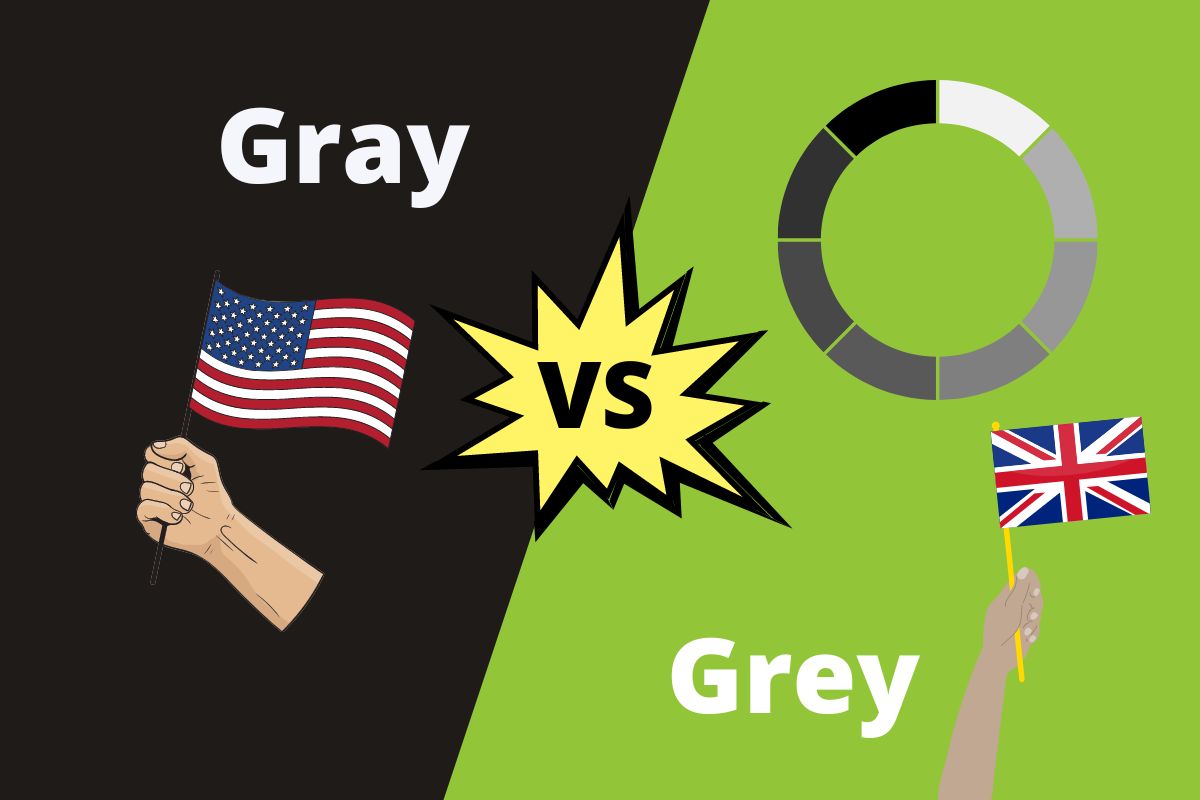The main difference between gray and grey is that grey is used in British English, and gray is used in American English.
If you get confused about the correct spelling to use while writing, read on to learn the differences between these words.
Table of Contents
Whats the Difference Between Grey and Gray
| Gray | vs. | Grey |
| Gray is a modern term. | Usage Special Use | Grey has been used for an extended period. |
| Gray is also the SI unit for the amount of energy absorbed from ionizing radiation, which equals one joule per kilogram (or 1J/Kg.) | Special Use | Grey doesn’t have any special usage. |
| America | Country Where It’s Used | England |
What Does Grey Mean?
The word grey refers to a noun used to describe a color made by mixing black and white. This color ranges from middle tones to black. It’s neither too dark nor too light.
This spelling of the color grey is often used by people in the United Kingdom while writing in British English. It has a variety of different meanings. Both are common spellings that refer to color.
For example, the color grey is also used to refer to a situation that holds no moral values and is primarily neutral. It also denotes military and other dress codes. Also, grey indicates different aspects of life.
Grey is also associated with age, myths, legends, people dealing with depression, and feelings of emptiness and loneliness.
Examples of Grey
- Adam wore a light-grey suit to work.
- The cloudy sky gives the city a grey look.
- The shades like red and yellow look nice in my closet, but the grey paint doesn’t.
- The winning dog was grey in color.
- His grey hair is predominant over black ones.

What Does Gray Mean?
Unlike grey, the word gray is an adjective. It refers to a color made by combining green and blue light. To be precise, the color gray is a lighter shade of blue that ranges from light blue to white.
More on the Color Gray
The American spelling of the color gray is It is used by people of the United States of America to write in American English.
Various shades are available for gray, depending upon which combination of colors it is made from. It’s a subtle color and can be used as a dark or cool tone.
Gray is also used to describe a feeling of ambiguity or uncertainty. It also refers to the after-effect of certain events in life.
Examples of Gray
- Tom purchased a dark-gray suit for his friend’s wedding.
- The clouds bestowed a gray hue to the morning sky.
- My cat’s fur has changed from black to gray in recent years.
- The cow has a gray tail.
- I prefer dogs with gray coats to dogs with chestnut coats.
- My hair is gradually turning gray.
Gray is also used as a scientific measurement. It uses the alphabet “A” to denote radiation absorption. One gray is equal to approximately one joule of energy.
Origins of Grey and Gray
Gray and grey are derived from an old English word, “grǣg,” previously used in ancient literature. It also relates to the Dutch word “grauw” and the German word “grau.”
As the grammatical rules changed over time, grǣg changed into grey in the UK and the rest of the world (Europe, Asia, Australia, etc.) But, the American writers introduced another variation of the word in the form of gray. It is mainly used in Australia with little usage outside.
Remembering the Difference
Both grey and gray depict a nearly identical definition. You can remember their uses by using a mnemonic device. For gray, “A” stands for America, while for grey, “E” stands for England.
Only Use Grey
These examples only use grey and never gray.
- Grey Goose Vodka
- Fifty Shades Of Grey
- Gandalf The Grey
- Grey’s Anatomy
- Gray Whale (a type of fish)
- Earl Grey Tea
- Greyhound (a dog breed)
If you’ve enjoyed this article, check out our post on the difference between love and in love.

